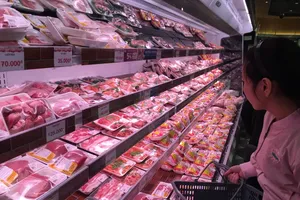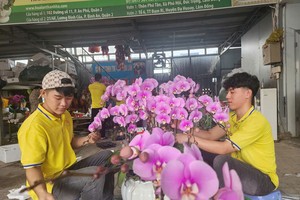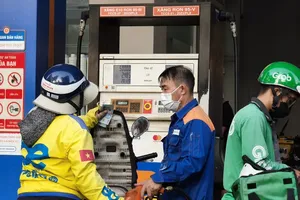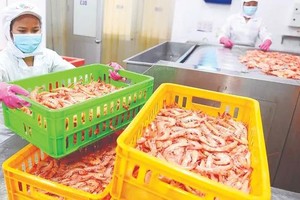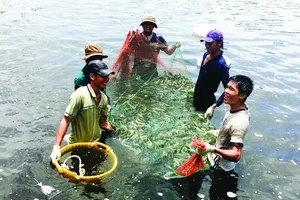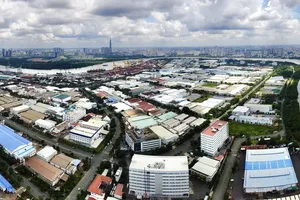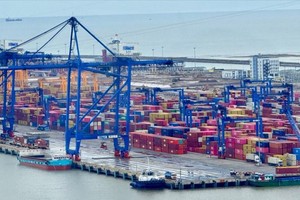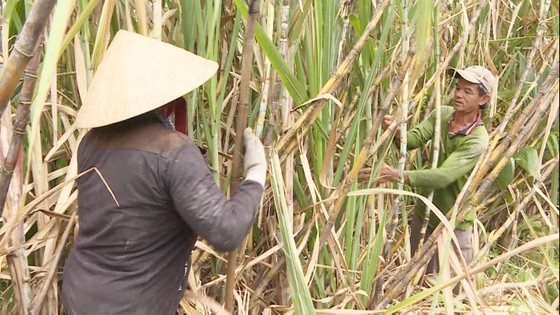 |
Sugarcane farmers harvest their crops |
In 2012, the sugarcane growing area in the Mekong Delta reached 52,000 hectares, while more than a dozen factories had been operated and they had competed to buy raw materials. However, roughly 8,000 hectares of sugarcane-growing areas are left in the Mekong Delta now and three factories are on the verge of closing due to lack of raw materials for production.
The culprits of the problem are the lack of connection between farmers and factories, and the failure to prevent smuggled sugar into the country.
The Mekong Delta provinces of Long An, Kien Giang, and Ca Mau were once baskets of sugarcane growing areas, but now all sugar factories in the provinces have closed, and no sugarcane growing area has been seen. 10 years ago, sugarcane was the main crop in Ben Luc District and some communes in Thu Thua District in Long An Province with a total area of up to 11,000 hectares.
Farmers in the province converted most of the sugarcane land area to growing lemons, dragon fruits, and guavas. Without raw materials for production, the Hiep Hoa Sugar Factory in Long An Province has operated moderately for many years; therefore, it has no money to pay wages to workers, leading to complaints and debts. This factory is officially closed so far.
Five years ago, Cu Lao Dung District of Soc Trang Province had nearly 10,000 hectares of sugarcane growing area, now it is less than 3,000 hectares. Similarly, in Tra Cu District of Tra Vinh Province, the low prices of sugarcane have been forcing farmers to shrink their 4,000 hectares of growing sugarcane in 2015 to about 1,100 hectares now. Many farmers in the Mekong Delta pointed out farmers decided to experiment with new crops and fruits due to unstable sugarcane prices.
Farmer Thach Det in Luu Cu 1 hamlet in Luu Nghiep Anh Commune of Tra Vinh Province said that his family generations had been growing the cane but he decided to shift from traditional sugarcane 10,000 square meters of land to grow rice from 2015 to the present because because he has suffered big loss after many years of continuously growing sugarcane.
A large sugarcane-growing area for raw materials in recent years with nearly 7,000 hectares in Phung Hiep District in Hau Giang Province has shrunken by nearly 2/3. Most farmers in this locality grow sugarcane to sell to traders who buy and resell to beverage mills or sugar mills. Farmers have no longer put their expectations on local sugar factories.
Farmer Hai Cuong in Cay Duong town, Phung Hiep District, revealed that he sells his effort or money on harvesting. Furthermore, farmers can choose to sell to traders who offer the highest prices because many traders have been willing to offer high prices; hence, farmers are no longer forced to sell at low prices.
Faced with this situation, the Board of Directors of Phung Hiep Sugar Factory - the largest sugar factory in the Mekong Delta with a crushing capacity of 2,500 tons of sugarcane a day had to issue a notice to stop operations in the 2023-2024 crop year on October 23. The board moaned that if the factory stops operating in the 2023-2024 crop year, it will suffer a loss of VND26.5 billion(US$1,086,308) for costs of factory depreciation, handling of laid-off personnel, maintenance, and security. However, this loss is only 1/3 if it continued operating, said a representative of the Board of Directors of Phung Hiep Sugar Factory.
According to Director of the Department of Agriculture and Rural Development of Soc Trang Province Huynh Ngoc Nha acknowledged that there are many reasons why the area of raw sugarcane in the province is shrinking, but the main reason is that there has been lack of connection between farmers and sugar companies in production and product consumption. Realizing this inadequacy in the cane industry, the agricultural sector and authorities at all levels in Soc Trang Province are acting as a bridge to link farmers and sugar companies into the production chain.
In the upcoming time, the locality will organize more meetings between businesses, companies, sugar factories and sugarcane farmers to better understand their partners' activities from which they can come to an agreement and sign contracts for the production and consumption of products to curb distress sales.
At the same time, the government and agricultural sector will also listen to opinions from farmers and representatives from sugar companies at these meetings; thereby, authorities can promptly support and remove difficulties in the production chain.
According to Mr. Huynh Van Thao, Head of the Department of Agriculture and Rural Development of Tra Cu District, in the 2022-2023 sugarcane crop year, farmers will have a profit of VND30 million - VND40 million per ha. However, this is only the second profitable crop of sugarcane production after five consecutive years of heavy losses. Because farmers have not used machines for production and harvesting synchronously but human labor; as a result, production costs increase.
To expand the sugarcane growing area for raw materials in the area, in the coming time, the locality will take heed of the transportation system for production as well as establish cooperatives, and organize production teams to reduce sugarcane production costs with the aim of increasing the income of sugarcane growers.
